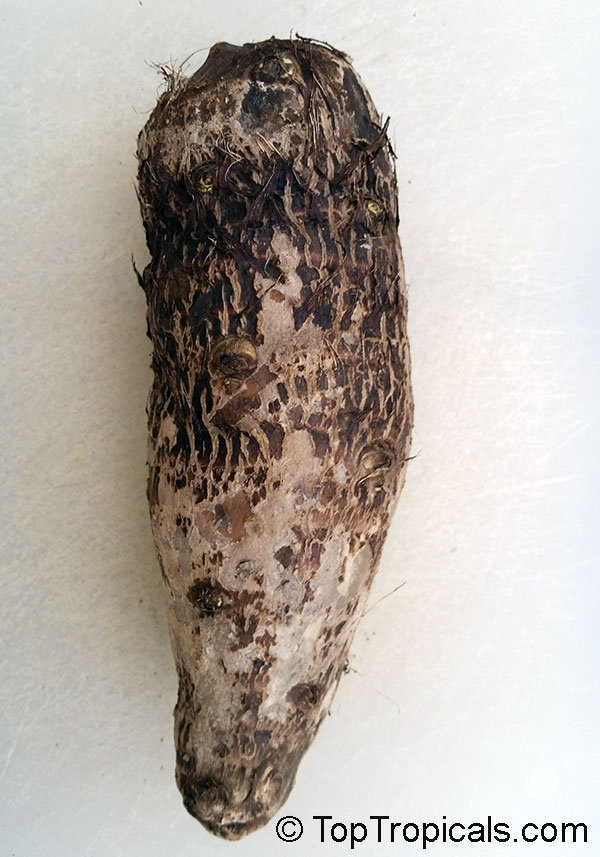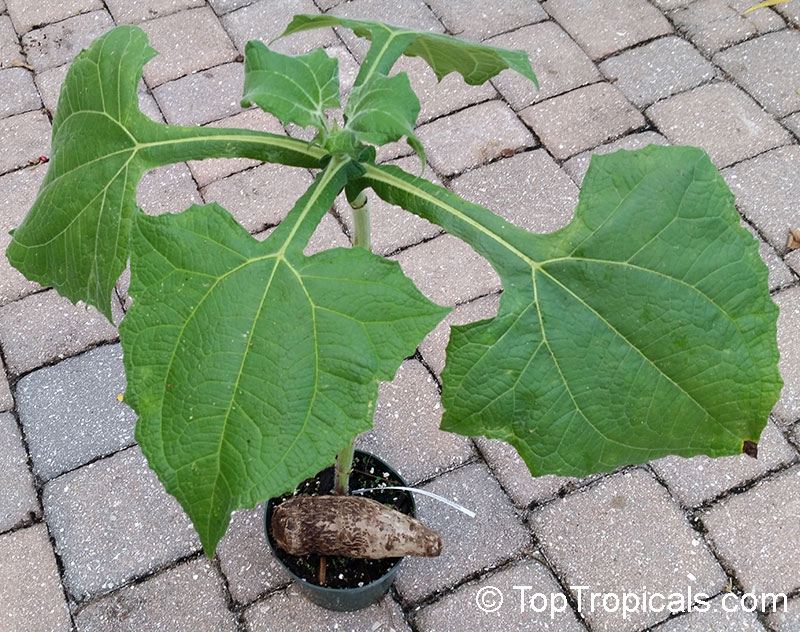Smallanthus sonchifolius (Bolivian Sunroot)
Top Tropicals Plant Encyclopedia
Botanical names: Smallanthus sonchifolius, Polymnia sonchifolia
Common names: Bolivian Sunroot, Yacon, Pear of the Earth
Family: Asteraceae
Origin: Andes from Colombia to Northern Argentina







Smallanthus sonchifolius, also known as Yakon or Bolivian Sunroot, is a plant native to the Andes that is grown from Colombia to Northern Argentina. The plant typically grows to a height of 2-5 feet and prefers full sun and well-draining soils. Yellow to orange flowers can be expected throughout the growing season.
The edible roots of Yacon are very juicy and crisp and have a flavor that resembles a blend of watermelon, apple, and pear. Its sweetness derives from the low-calorie sugar substitute it contains, making it an ideal addition to weight loss plans or low-sugar diets. In addition to its culinary uses, Yacon has long been used as a medicine by many cultures. Its leaves are often used as a wrap for food during cooking, while its roots are known to have anti-inflammatory, diuretic and anti-rheumatic properties.
Yacon is a hardy plant and can tolerate temperatures down to at least 30F for a short period of time, making it suitable for gardens in USDA zones 7-10. In warmer regions, it can be planted in the ground and can produce up to 30 tubers per plant. However, in cold regions, it is best grown in containers to protect the tubers from freezing.
The tubers can be eaten raw or cooked and can be added to a variety of dishes such as soups, salads, stir-fries, juices, and fried dishes. They can also be stored for up to ten days by wrapping them in newspaper and storing them in a cool, dark place.
Overall, Yacon is a delicious and versatile plant with a variety of culinary and medicinal uses. It is also a unique and fun plant to grow for a fall harvest.













